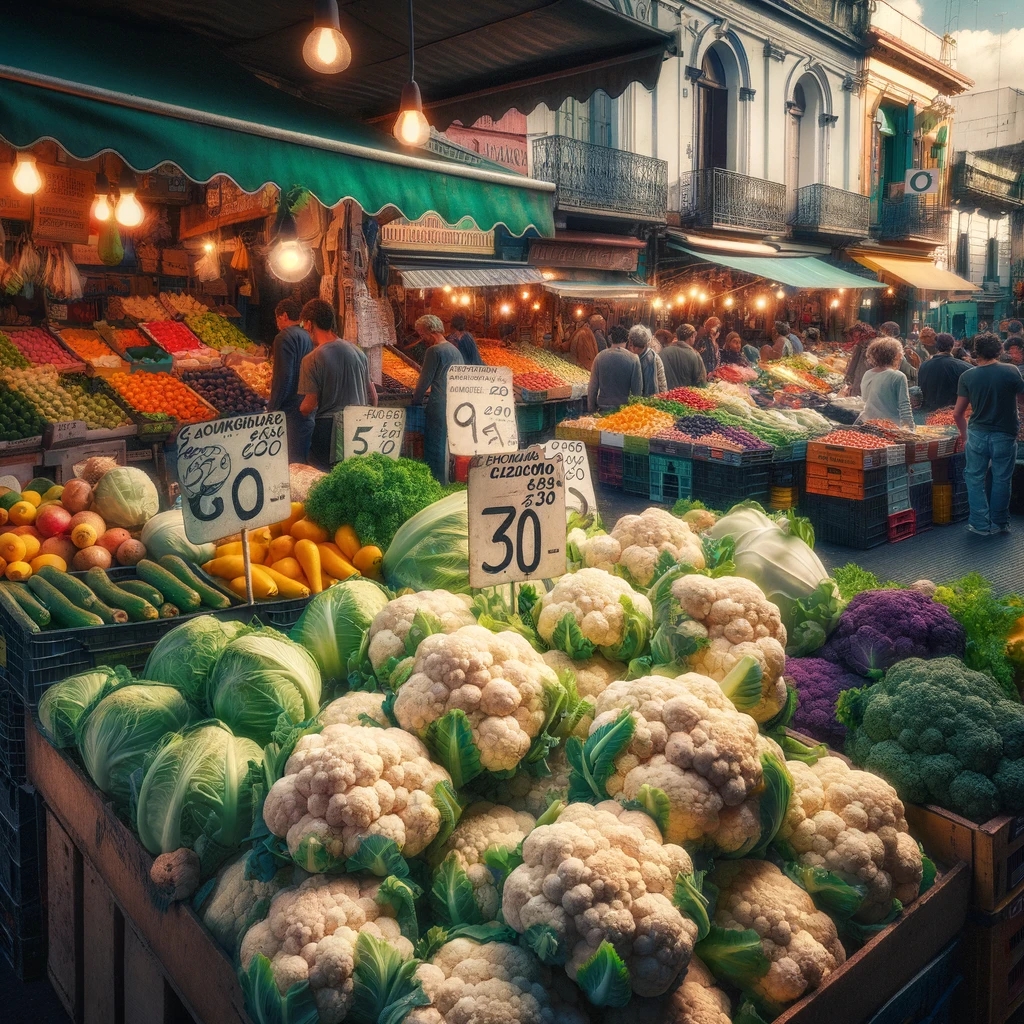In the tapestry of Argentina’s agriculture sector, cauliflower emerges as a vegetable of notable interest, primarily due to its fluctuating market prices and its significance within the local and national culinary landscapes. This report, sourced from husfarm.com, delves into the recent trends and pricing dynamics of cauliflower in Argentina, offering a panoramic view of its market behavior as of March 2024, with a keen focus on the Mercado Central de Buenos Aires, a pivotal trading hub for agricultural commodities in the country.
Market Price Trends of Cauliflower in Buenos Aires
The period spanning from early March to mid-March 2024 has witnessed a fascinating interplay of prices for cauliflower, reflecting both the market’s response to supply-demand equations and the broader economic contexts influencing agricultural trade. The data highlights three distinct categories of cauliflower traded in the Mercado Central de Buenos Aires: 1st Class Large Cage, 1st Class Medium Cage, and the specially promoted (PROM.ESP.) cauliflower, each commanding its own price range and market demand.
Price Dynamics Observed
For the 1st Class Large Cage cauliflower, prices fluctuated between 600 ARS to 800 ARS per kilogram, suggesting a premium on the size and quality deemed superior by market standards. Concurrently, the 1st Class Medium Cage variant, presumably catering to a different segment of consumers or retailers, was tagged at a lower bracket of 400 ARS to 600 ARS per kilogram, underscoring the market’s segmentation based on size and quality preferences.
Interestingly, the PROM.ESP. category, which likely denotes a special promotion or a distinct quality or origin, presented a narrower price window, hovering around 576.67 ARS to 653.33 ARS per kilogram. This category’s pricing strategy might reflect a targeted approach to meet specific market demands or to push the sales of cauliflowers that possess unique attributes, such as organic certification or a rare variety.
Analysis of Market Behavior
The consistency in the price range of cauliflower over the observed period signifies a relatively stable market, albeit with slight fluctuations that could be attributed to changes in supply levels, harvest quality, or shifts in consumer demand. Factors such as seasonal variations, export-import dynamics, and inflationary pressures in Argentina’s economy could also play critical roles in shaping these price movements.
Moreover, the differentiation in pricing between the various categories of cauliflower underscores the market’s segmentation, where consumers and retailers exhibit preferences based on size, quality, and possibly organic versus non-organic choices. Such segmentation could reflect broader trends in consumer behavior, where there’s a growing inclination towards health-conscious and quality-oriented food purchases.
Concluding Insights
The cauliflower market in Argentina, particularly within the bustling aisles of the Mercado Central de Buenos Aires, offers a microcosmic view of the complex interrelations between agricultural production, market demands, and economic variables. As of March 2024, the market presents both challenges and opportunities for producers, traders, and consumers alike, navigating through the nuances of price fluctuations and market preferences.
For stakeholders within the cauliflower supply chain, understanding these dynamics is paramount. It enables producers to align their cultivation and harvesting strategies with market demands, helps traders in strategizing their buying and selling decisions, and guides consumers in making informed choices. As Argentina continues to play a vital role in the global agricultural landscape, the insights gleaned from the cauliflower market could offer valuable lessons in agricultural economics, market resilience, and consumer trends.
In essence, the cauliflower market in Argentina exemplifies the broader themes of agricultural trade, offering a fascinating case study on the interplay between local production practices, market mechanisms, and global economic influences.





